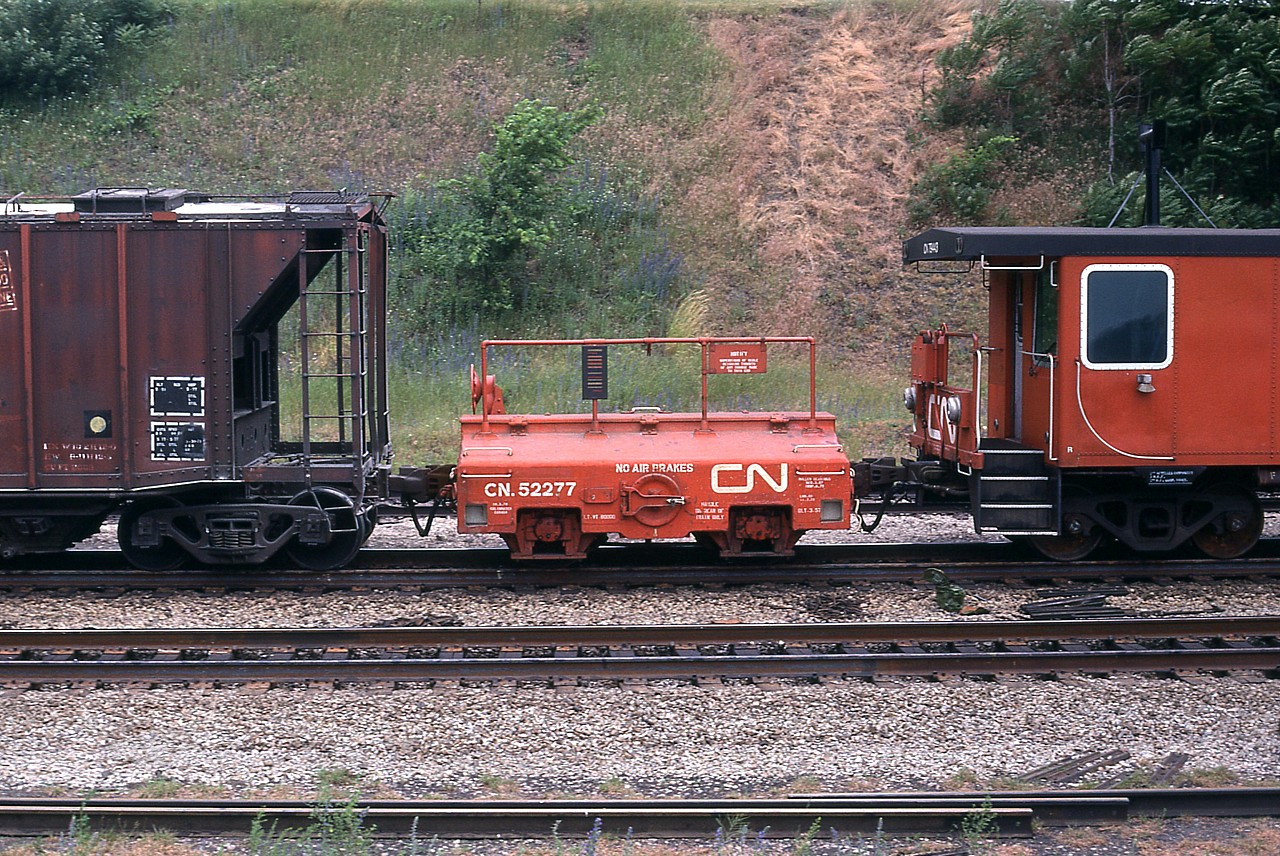|
Caption: I don't expect much excitement over this image, but thought to post a shot of a Scale Test Car as it IS part of railroading and not many of these are seen out on the mainlines. Good reason is, there are not many of them. This one is a product from 1957, with 80,000 lb weight; and is used for calibrating scales where necessary. The car is set at the middle of the scale and here's hoping the scale reads what it is supposed to read. Otherwise, repairs are in order. The car is almost always at the end of the train while in transit, in this case, next to the caboose back when such were part of the landscape. :o) No air brakes, but as in this one, hand brakes were often present. I am wondering if the train moved at a restricted speed. Anyone know?
|



From my General Instructions 696 that I received when hiring on in 1975 (goes well with the 1979 date of your photo).
(C) Trains handling scale test cars:
(i) On tracks where maximum freight speed is 30mph or higher . . . . . . . 30mph.
(ii) On tracks where maximum freight speed is less than 30mph . . . . . 5mph less than the maximum freight speed.
Always hated having scale test cars, 7200 class units and foreign switchers on my trains because of speed restrictions. Thankfully scale tests cars are rare these days and if you happen to see one its now on a flatcar,no longer part of the rolling stock.
I can’t find any notes on CN cars, but I do know CP’s 2-axle scale test cars were limited to about 30mph during transit (there’s probably a similar restriction for CN’s).
Most of CN & CP’s scale test cars seem to have been sold off in recent years (to Canac?) and now bear CANX reporting marks. And, the 2-axle cars are often seen being transported on a flatcar with ramp at the end – presumably to get around any speed or handling restrictions.
Conrail had one that was built in 1893. Don’t know if that survived.
Thanks for the info, guys. A 30 MPH restriction would sure have the train in the way of regular traffic. Can’t imagine this on the flat lands.
CN 696 (6-85), Subject 6.6 Marshalling, (b) Scale Test Cars: Scale test cars must be placed at rear of train, immediately ahead of the last car, or operating caboose, if provided, when handled in freight or work trains, and immediately ahead of passenger equipment when handled in mixed trains.
I spent 12 hours on the dual hump at Mac Yard on a Canada Day dragging this this up and down to calibrate the scales. There was also a modified “Ore Train” car based at Mac Yard for checking the scales.
Dave: What a ‘drag’ that would have been. (
(
Back in 1981, on the day our youngest child was born, I was ordered in Toronto for the “London Pickup” back when it was run out of Toronto from the east freight pool.My wife had managed to reach me by phone advising of the impending birth before we departed so there was an urgency to our trip home. I called the train dispatcher to let him know hoping for a favour or two to speed things up.
When I reached the GYO, I found out we had a scale test car ahead of the van destined for Guelph. We had a big train so when we reached Guelph Jct we would be required to set the car off from the tail end. On the way from Toronto Yard to Guelph, we cheated a bit on the 30 mph and I can tell you the speed restriction is absolutely warranted.
Later in that trip, the dispatcher put 904 with the Business Car 24 (complete with Supt riding it) in the siding at Coakley…we went sailing by with 25 odd cars at track speed, now having shed the annoying scale test car back at Guelph Jct. Thanks Arnold for another photo triggering another memory from my railroading past. In case anyone wonders, I missed the birth by 20 minutes. When I walked into my the room where my wife & new baby were recovering..another blanket with pink stripes…girl number 3!